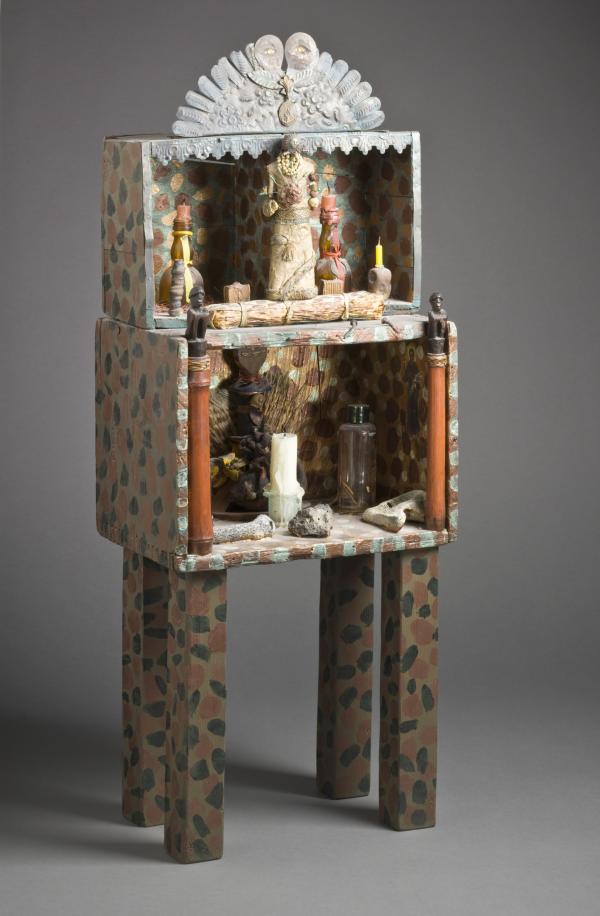grande dame. noun (plural: grandes dames)
A woman who is socially prominent, respected, and
experienced, especially one who is advanced in age.
A woman who is accomplished, influential, and
a senior figure in a particular field.
Betye Saar has been a major pillar of creativity within the contemporary art world for over five decades. She's the recipient of many prestigious honors, including various awards, two National Endowment for the Arts grants, and numerous honorary doctoral degrees, with works in major museums throughout the United States and beyond.
Upon graduating with a Bachelor of Arts in design from UCLA, Saar became encouraged with the results of a post-graduate printmaking class. She felt that her work had finally segued from that of design to fine art. As an accomplished printmaker, her prints carried in them the undercurrents of the occult and a metaphysical mystery of the unknown.
A milestone in her artistic journey was the inspiration attained at a 1967 Joseph Cornell exhibition at the Pasadena Museum (formally the Grace Nicholson House). Cornell was a major artist from the from the 1940s into the early 1970s who created small, assembled shadow boxes of found objects.
With the civil unrest in the South in the 1960s, the uprisings, and finally the assassination of Dr. Martin Luther King, Jr., Saar was forced to not abandon but put her magical, occult themes on the back burner. Her focus became centered on the plight of Black people in America. She recycled derogatory images of Black people and how they were traditionally depicted within stereotypical scenarios. The result was the manifestation of her iconic artistic offering, The Liberation of Aunt Jemima. As well as making a feminist statement, Saar released and abandoned the image of Black women in servitude, elevating her to a heroine who took up arms of resistance to the status quo.
The late art historian Arnold Rubin wrote a catalogue essay titled "African Accumulative Sculpture: Power and Display." The text made an imprint on Saar’s approach to certain objects; the "how" and "when" they were used. Some objects were collected for their "power" while others were for "display." Organic objects such as bones, hair, teeth, and even blood were collected for power, whereas cowry shells and paint were collected for display and could be used to complement or accommodate the power objects within a composition. Saar began creating altars similarly embellished with power elements included in her work. Her quest was the layering of multiple objects of visual information that encompass an assembled piece.
As an art handler, while installing the work of this grande dame at LACMA, I experienced this phenomenon of "power" first hand! I felt the same aura among her works that I felt when I first came into the presence of the art of master artists Noah Purifoy, John Outterbridge, and Judson Powell back in the 1960s at the Watts Summer Festival art exhibitions. During that time, at the height of the Black arts and civil rights movements in an era of Black consciousness, I heard descriptions of this power among the viewers at the exhibition as "divine creative energy," "vital force," "juju," and of course "soul"! The kind of art that did NOT need "do not touch the art" labels within its installations. One would KNOW not to touch nor even DARE to touch! The art exuded that kind of audacity.
An interesting note is that John Outterbridge and Betye Saar were the two artists invited to represent the United States contingent in the 22nd Biennial of Sao Paulo, Brazil in 1994.
Saar has stated that the very last piece of a series or body of work pushes or leads her into the next body of work or series.
May the art of Betye Saar continue to quench the visual taste buds of our aesthetic palates.
Saar’s work was most recently seen at LACMA in the exhibition Betye Saar: Call and Response, which travels next to the Morgan Library & Museum in New York, where it is slated to be on view from September 12, 2020 through January 31, 2021.



